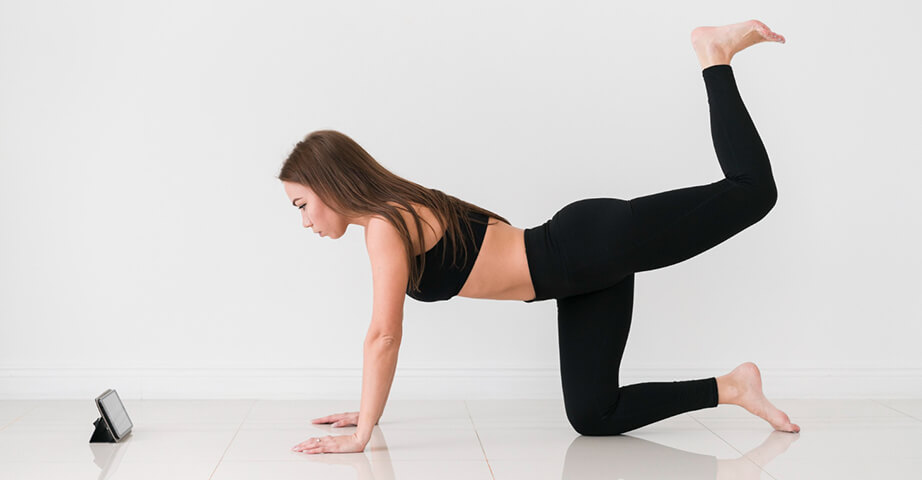Cardio - rules, benefits, sample exercises

Cardio is an aerobic, endurance activity which is very popular among people who are trying to lose weight and take care of themselves. By matching the intensity of cardio and the type of exercise performed to your health and fitness status, there are no restrictions, either age or health, to start exercising. What results can you expect by doing cardio training? What should I pay attention to in planning my aerobic activity?
Cardio - what is it and how does it function?
Cardio (cardio) is an abbreviation for 'cardiovascular exercise'. In other words, it is described as aerobic, oxygen exercise or endurance training. During cardio training, the heart rate speeds up, the number of breaths per minute increases, the heart works faster and thus more oxygen is delivered to the tissues alongside the blood. With this type of exercise, the condition of the body, the capacity of the lungs, and the work of the heart improve, which means that the strength and performance of the body increase.
What kind of exercise is cardio?
- running,
- fast walking,
- swimming,
- cycling,
- aerobics,
- pilates,
- dynamic yoga,
- mountain climbing,
- ball games,
- various types of mat exercises, e.g. jumping, squats, lunges, stepping, and crocodiles.
The listed exercises are only examples. The category of cardio includes any physical activity that causes accelerated breathing and an increased heart rate.
Effects of cardio training
Activities categorised as cardio fit perfectly into what health professionals call moderate physical activity. Moderate physical activity, including cardio, performed regularly is extremely important in the prevention of many diseases and improved quality of life.. Doing cardio for at least 150 minutes a week at moderate intensity or 75 minutes a week at high intensity, you can expect:
- improved cardiovascular health,
- a reduction in LDL cholesterol levels,
- a drop in blood pressure,
- improved glycaemic control,
- reduced asthma symptoms,
- reduced chronic pain,
- improved sleep quality,
- improved immune system function,
- improved brain function, improved memory and cognitive abilities,
- better mood,
- increased bone density,
- improved sexual function.
Recommended products
Cardio training and maximum heart rate
During cardio workouts, an increased heart rate level is very important. In cardio training, the heart rate should reach 50-80% of the maximum heart rate (HR max).
The maximum heart rate is the highest number of beats per minute at which the heart is able to pump blood at maximum load. HR max is not the same for everyone and is not even identical for the same person under different conditions. The value of the maximum heart rate depends on many factors - age, weight, fitness, smoking, chronic diseases, associated emotions, weather conditions, especially temperature and air humidity.
HR max can be calculated from formulas such as this one:
WOMEN HR max = 210-(0.5 x age)-(0.022 x body weight [kg]),
MENS HR max = 210-(0.5 x age)-(0.022 x body weight [kg])+4.
However, the formulas take into account very few factors influencing maximum heart rate and only give an indicative picture of its value. HR max can be determined accurately during an exercise test as well as by using a smart band or a watch that connects to a phone and calculates maximum heart rate and resting heart rate from the data. Accurate knowledge of maximum heart rate is not necessary for beginners. However, athletes and advanced individuals adapt the training to their heart rate zones, which allows them to reach their training goals faster.
How can you assess if the heart rate during a cardio workout is high enough? Using running training ranges as an example, we can see at what level of exertion the various maximum heart rate ranges are reached.
| Overall running endurance in the 1st intensity range | Running endurance in the 2nd intensity range | Running endurance in the 3rd intensity range | Pace endurance | |
| % HR max | 65-70 | 75-85 | 88-92 | 95-100 |
| Fatigue on a 10-grade scale | Slight 3-4 | Moderate 5-6 | Severe 7-8 | Very severe 9 |
| Speech test | Full conversation | Complete sentences | Few words | Single words pronounced with difficulty |
As suggested by the table, we can say that cardio training does not enter the highest intensity ranges and that your heart rate and breathing allow you to pronounce full sentences during exercise.
How should cardio exercises be performed?
Cardio exercises should last at least ten or more minutes, preferably 25-30 minutes for beginners and 45 minutes for advanced individuals. Don't forget the warm-up, which will prepare the muscles and joints for more intense work and help prevent injury, as well as support mental preparation for the workout.
The level of cardio intensity determines the effects of the activity. Cardio exercises can be performed at intensities:
- low, at 50-60% of HR max, recommended for beginners;
- moderate, at a level of 60-70% HR max, at which it becomes effective to burn calories and work on losing excess body weight;
- high, at 70-80% HR max, which is best for improving endurance.
The intensity of cardio exercises should be matched not only to your goals but also to the body's capabilities - physical preparation, age, body weight, and illnesses that may not allow for higher intensity ranges. It is best to start with simple, low-impact exercises and gradually increase the intensity.
The number of workouts per week depends on the level of intensity. Moderate and high-intensity workouts should be done 3-4 times a week. Low-intensity cardio is recommended even daily, e.g. in the form of fast marching.
Cardio exercises do not require any special equipment. However, a good quality mat will make them more comfortable. Cardio can be practised at home, outdoors, at the swimming pool and in the gym.
Cardio training at home
Cardio training is one of those activities that can be easily done at home and without equipment. Practising cardio at home, you can choose from thousands of ready-made workouts available on video platforms, selecting the right one for you in terms of duration, sophistication, intensity and goal. Doing exercises from a video is not the only option for cardio at home. You can train on your own by doing squats, jumping jacks, lunges or various types of running in place. If you are a beginner and have no experience with cardio, you can gain a lot from working with a trainer. He or she will develop a professional cardio training plan tailored to your abilities and goals, taking into account the duration of the exercises, the number of repetitions, breaks between exercises, frequency of training, or exercise rotation.

Cardio exercises for weight loss
Cardio is the first choice of most people who want to lose weight. Accelerated heart rate, problems with breath balance and general fatigue are associated with faster calorie burning by the body and, consequently, weight loss. Cardio exercises are a good way to help you reduce excess weight. When you do them, the blood circulates faster, supplying more oxygen to the mitochondria, which in turn uses more energy. Combined with a weight-loss diet, cardio exercises can generate a large calorie deficit and accelerate weight loss..
How many calories can you burn by doing cardio?
The number of calories burned during physical activity depends mainly on the type of activity, intensity, body weight and muscle mass. In other words, two people doing the same exercise will not always consume the same amount of energy. Nevertheless, indicative amounts of calories burned during different cardio activities have been calculated. During 1 hour of cardio, you can burn approximately:
- 270 kcal – brisk marching,
- 350 kcal – swimming,
- 360 kcal – roller-skating,
- 390 kcal – cycling,
- 430 kcal – mat training,
- 490 kcal – skipping,
- 490 kcal – running.
